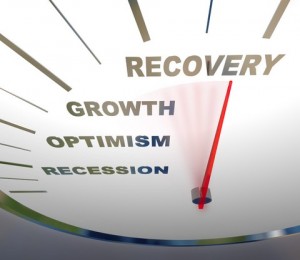31 Aug HOW FAST THE MARKETS RECOVER
A Look at How the Markets Have Rebounded Through the Years.
The stock market is amazingly resilient. You might be surprised at how fast the stock market can change … for the better. Let’s look at how the market has recovered remarkably – and quickly – from some notable downturns.
2008-2009. The collapse of the sub-prime mortgage markets triggered a recession and made 2008 the poorest year for stocks since 1931. The Dow Jones Industrial Average fell 10% in June 2008 and fell 10% again in October 2008, losing 19.12% for the year. On March 9, 2009, the major U.S. indices closed at 12-year lows with the S&P 500 at 676.53.1,2,3
Then the market took off. Investors who swore off stocks in early 2009 lost out on one of the great rallies. From the March 9 lows to the end of 2009, the S&P 500 soared 64.83% while the NASDAQ gained 78.87% and the Dow gained 59.28%.4
2001-2002. After the four-day closure of the stock market following 9/11, the Dow fell 685 points to 8,920 on September 17. It kept falling, losing 14.26% in a week to close at 8,235 on September 21. But what happened next? A huge gain. The Dow closed 2001 at 10,021 – a 21% rebound in less than three months.5
There were more challenges ahead. On October 9, 2002, the Dow had fallen to 7,286. But on Halloween, the Dow sat at 8,397 – a 10.6% gain in 22 days.5
As for the people who panicked and bailed out of the stock market, they ended up kicking themselves: in 2003, the DJIA gained 25.3%, the S&P 500 26.4%, and the NASDAQ 50%.6
1987. October 19 was Black Monday: in a contagion of selling exacerbated by unchecked computer technology, the Dow lost 22.6% in one day, falling to 1,738, a 508-point loss.7 (That would be akin to a 2,400-point one-day drop today.) The S&P 500 lost 20.4%.8 By comparison, the initial “Black Monday”, the stock market crash of 1929, represented a 12.8% market loss.9
Then the recovery kicked in. During the next two trading days, the Dow gained nearly 300 points – and it closed 1987 at 1,939, gaining back all of the loss and ending up 2% for the year.10 By January 1990, the DJIA was at 2,800.11
If you were fortunate enough to invest $1,000 in the S&P 500 index at the close of Black Monday and reinvested your dividends, you would have wound up with about $10,800 20 years later.7 If you had invested in the Dow stocks a week before Black Monday, you would have lost 30% on your investment in the crash … but if you held on, your investment would have gained 462% over the next 20 years.10
1974. With investors fretting over rising inflation and the energy crisis, the Dow loses 30% of its value during the first three quarters of the year. Suddenly, the Dow gains 16% in October.12 In early December 1974, the Dow is at 577; in July 1976, it hits 1,011.5
So while the Dow, S&P and NASDAQ have been through some rough periods (and even a poor decade), the important thing is how they have climbed historically.
On August 12, 1982, the Dow was at 777. On January 14, 2000, it was at 11,722.98. That’s a 1,500% gain in 17½ years.13 This is why people stay in the market through the downturns. This is what the market is capable of achieving. In conclusion, always keep in mind that past performance is not always indicative of future results.
Kevin M. Nast is a Financial Advisor and the President of NastGroup Financial in Northville, MI 48167. He may be reached at nastgroupfinancial.com or 248.347.1888. Kevin also services clients in Auburn Hills, South Lyon, Westland, Northville, Plymouth and the surrounding metro Detroit area as well as 13 additional states across the US.
These are the views of Peter Montoya Inc., not the named Representative nor Broker/Dealer, and should not be construed as investment advice. Neither the named Representative nor Broker/Dealer gives tax or legal advice. All information is believed to be from reliable sources; however, we make no representation as to its completeness or accuracy. The publisher is not engaged in rendering legal, accounting or other professional services. If other expert assistance is needed, the reader is advised to engage the services of a competent professional. Please consult your Financial Advisor for further information.
LD35565-1/10
Citations.
1 cnbc.com [12/31/08]
2 allheadlinenews.com [1/3/09]
3 money.cnn.com [3/9/09]
4 cnbc.com [12/31/09]
5 the-privateer.com [6/30/08]
6 upi.com [12/31/03]
7 sfgate.com [10/18/07]
8 foreignpolicy.com [10/07]
9 money.cnn.com [10/26/04]
10 articles.moneycentral.msn.com [10/19/07]
11 answers.com [7/3/08]
12 money.cnn.com [6/27/08]
13 answers.com [7/3/08]





Sorry, the comment form is closed at this time.